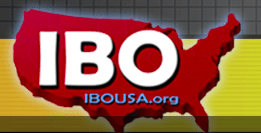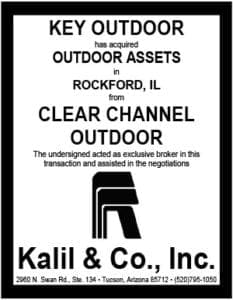 This week’s billboard creative design tips from from the IBOUSA website. The IBOUSA is a professional organization for independent regional billboard operators. Insider thanks Chris Cowlbeck for permission to reprint.
This week’s billboard creative design tips from from the IBOUSA website. The IBOUSA is a professional organization for independent regional billboard operators. Insider thanks Chris Cowlbeck for permission to reprint.
QUICK Test – print your design, go back 30’ and if you can’t read it in 4 seconds, change it!
Product Identification
Make sure you can read the advertiser’s name.
Short Copy
No more than 10 words total, and 5 words in the headline.
Short Words
Use short words for faster comprehension.
Large and Legible Type
Words are viewed from distances of 50-400 feet. All text should be big as possible.
Increase Line Thickness
Thin lines optically disappear quickly as you get further away.
Bold Colors
Dare to be bold! Being subtle is for in-home and in-hand viewing
High Contrast
High contrast means better visibility.
Simplify Everything
Focus on one key idea or message.
Color Frequency and Vibration
Like sound waves, light rays have varying wave lengths or frequencies. Some pigments absorb light while others reflect it. Reflected frequencies are perceived as color. Complementary colors, such as red and green, are not legible together because they have similar values that cause the wave lengths to vibrate. Any combination of similar color value (even without vibration), will produce low visibility. Yellow and black are dissimilar in both hue and value providing the strongest contrast for out-of-home design. White complements colors with light values.
Contrast
Strong contrast in hue and value is essential for creating good out-of-home design. Hue is the identity of color while value measures a color’s lightness or darkness. Contrasting colors are best when viewing billboard designs from far distances.
The 14 color combinations represent the best use of color contrast for readability. The chart evaluates primary and secondary color combinations taking into account hue and value. Example one is the most legible color combination while example 14 is the least legible.
Image
Advances in production technology are allowing advertisers to use increasingly complex imagery in their creative application. However, the requirements for effective outdoor advertising have remained the same — imagery must be bold, clear and easy to understand. Strong images against simple backgrounds create high-impact visuals.
Typeface Kerning
Sufficient kerning between letters assures the legibility test from far distances. Tight kerning reduces legibility causing adjacent letters to attach together visually. Without proper kerning “clear morning” could be interpreted as “dear mom.”
Typeface Stacking
A single horizontal line of text allows rapid assimilation of a message without interruption. Multiple text lines increase the time needed to discern a message.
Typeface Leading
If more than one text line is necessary, use adequate leading between lines. When a line of text rides on the line below the interplay of descenders and ascenders it will make a message difficult to read.
• Crowding letters into a restricted space will reduce legibility.
• Severely contrasting letter strokes will lose definition when viewed from far distances.
• Thin typefaces will become invisible from far distances.
• Bulky typefaces lose distinction between letters.
• Script typefaces are difficult to read at any distance.
Typeface Color
Choose colors with high contrast in both hue and value. Contrasting colors work best when viewed from a distance. Colors without contrast will blend together and obscure the message.
Typeface Copy
Copy should generally be kept to seven words or less and should be concise to register quickly in the mind of a moving audience. A strong illustration is worth 1,000 words.
Typeface Font Type
Billboard type and lettering should be simple, clear and easy to read. Be careful with spacing between letters and between words. Letters with too little spacing tend to merge when viewed from a distance. Simple, sans serif type faces work best in outdoor; ornate, serif typefaces do not.
Paid Ad


















You might also try OAAA’s free Creative Testing Tool.
The OOH Creative Testing Tool allows you to view billboard, street furniture and transit creative in the environment. Once you have uploaded your creative, you will be able to zoom in and out to see the work at a range of distances, share the rendering with colleagues and clients, and print out a copy for your records.
Check it out at creativetool.oaaa.org.